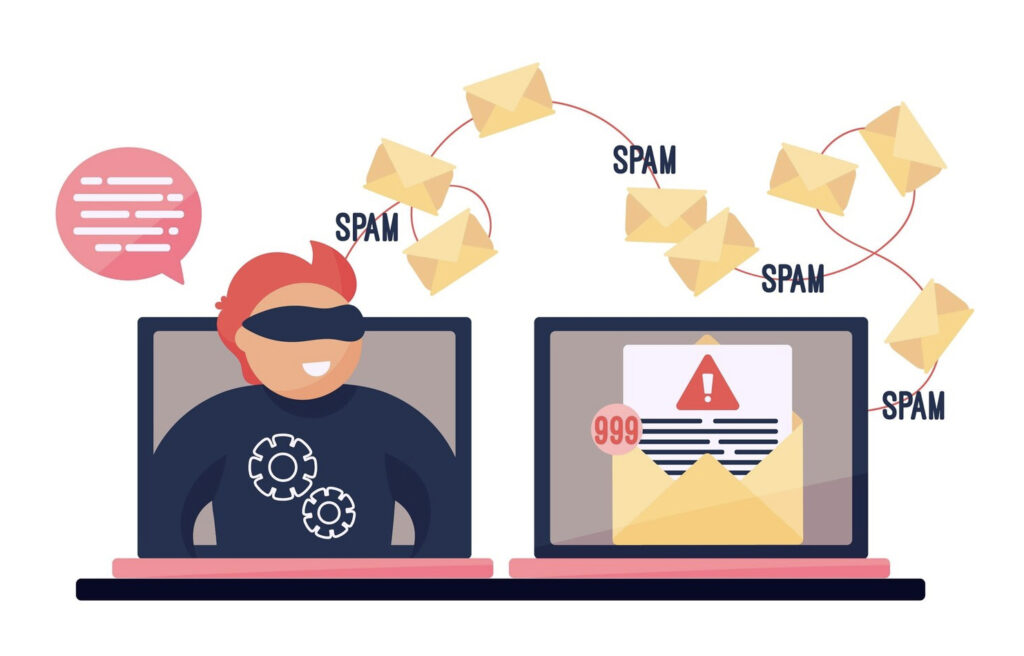Email marketing can be a highly effective way to reach your audience, but only if your messages make it to the inbox. Too often, well-crafted emails end up in the spam folder, unseen and unengaged. To maximize your email deliverability and ensure your messages avoid the spam folder, it’s crucial to follow certain best practices. In this comprehensive guide, we’ll go over the do’s and don’ts of email marketing that will help you avoid the dreaded spam folder.
Understanding Spam Filters and Their Impact
Spam filters are sophisticated tools used by email service providers to prevent unsolicited and harmful emails from reaching users’ inboxes. These filters analyze various aspects of each email, such as content, sender reputation, and even user behavior (such as engagement levels with previous emails). If your email triggers any red flags, it may get marked as spam.
Spam filters evaluate elements like your email’s subject line, content structure, and sender reputation. They may flag emails that contain suspicious links, poor formatting, or even certain keywords commonly associated with spam. This is why it’s essential to stay within the acceptable limits to avoid getting flagged.
Additionally, spam filters look at your sender’s history. If previous emails from your domain were marked as spam, it becomes more likely that future emails will face similar scrutiny. Knowing how these filters work is key to designing email campaigns that pass through them successfully. By adhering to best practices, you’ll significantly improve your chances to avoid email spam folder outcomes and deliver more messages directly to your audience’s inboxes.
Do: Use a Verified Email Domain
One of the simplest yet most effective ways to avoid the spam folder is to use a verified email domain. Email services like Gmail, Yahoo, and Outlook take extra measures to authenticate the emails they receive, and one major step in this process is domain verification. When you send an email from a verified domain, it signals to email service providers (ESPs) that your message is legitimate.
To verify your domain, use Sender Policy Framework (SPF) and DomainKeys Identified Mail (DKIM) records. These are authentication protocols that ensure your email is coming from a verified and trusted source. When you implement SPF and DKIM, you reduce the risk of your emails being flagged as spam. This also prevents cybercriminals from spoofing your domain to send fraudulent emails.
Another way to boost your sender reputation is to use Domain-based Message Authentication, Reporting & Conformance (DMARC). This further enhances your authentication by specifying how receivers should handle messages that fail SPF or DKIM checks. Using all three—SPF, DKIM, and DMARC—significantly improves your deliverability rates and ensures your emails are trusted and hit the inbox.
Don’t: Use Misleading Subject Lines
The subject line is one of the most critical elements of your email. It not only impacts open rates but also determines whether your email will be marked as spam. Misleading subject lines are one of the biggest triggers for spam filters. Phrases like “Congratulations, you’ve won!” or “Urgent: Act now!” may grab attention, but they are likely to land your email in the spam folder.
Spam filters are designed to catch these types of clickbait tactics. Beyond the filters, using misleading subject lines also damages trust with your audience. If the content inside doesn’t match the expectation set by the subject line, your subscribers may report the email as spam, further damaging your sender reputation.
Instead, craft clear and honest subject lines that reflect the content of your email. Keep them concise and relevant to your audience’s interests. By being straightforward, you build trust with your readers, improve your open rates, and increase your chances of staying out of the spam folder.
Do: Maintain a Clean Email List
Maintaining a clean and up-to-date email list is crucial for ensuring that your emails are delivered successfully. Over time, email lists accumulate invalid or inactive addresses, which can lead to high bounce rates and reduced deliverability. Sending to these inactive accounts can damage your sender reputation and cause future emails to be flagged as spam.
Start by regularly cleaning your email list. Remove inactive subscribers who haven’t engaged with your emails over a period of time. Tools that allow for automatic list cleaning and validation can be a great asset in this regard. You can also use a double opt-in process to ensure that subscribers genuinely want to receive your emails. This means that after someone subscribes, they must confirm their subscription through a verification email.
Segmenting your audience is another effective strategy. By dividing your list into groups based on engagement levels or interests, you can send more targeted and relevant emails, reducing the likelihood of users marking your messages as spam.
Don’t: Overload Emails with Images and Links
While visuals and links are important in making your emails engaging and actionable, overloading your message with too many images or links can be a red flag for spam filters. Emails that are overly image-heavy, or that contain an excessive number of links, are more likely to be flagged as promotional, which could land them in the spam folder.
As a rule of thumb, aim for a healthy balance between text and images. The ideal ratio is roughly 60% text to 40% images. This helps to convey your message without making it seem too promotional. Similarly, limit the number of links to essential ones that add value to the email. Including too many hyperlinks, especially to low-authority websites, can decrease your chances of reaching the inbox.
Remember, the goal is to provide a smooth and valuable reading experience for your subscribers. Use visuals sparingly and only when they genuinely enhance your message.
Do: Optimize Email Content for Deliverability
To improve your email deliverability and avoid email spam folder results, optimizing your email content is essential. Start by ensuring your emails have a balanced layout, with clear and valuable information. Avoid overusing words that are commonly associated with spam, such as “Free,” “Buy Now,” or “Act Immediately.”
Instead, focus on providing useful and relevant content to your audience. Your message should be clear and offer tangible value, whether it’s educational, promotional, or engaging. Emails that are overly promotional without providing any value tend to get flagged by both users and spam filters.
Additionally, test your emails to ensure they are mobile-friendly. Most users check their emails on their phones, so emails that aren’t optimized for mobile could get deleted or marked as spam. By optimizing your email content, you’ll build a positive sender reputation, leading to better deliverability and stronger engagement.
Don’t: Neglect Personalization in Your Emails
Personalization goes a long way in helping your emails stand out from the crowd and avoiding the spam folder. Emails that feel generic or impersonal are more likely to be ignored, and in some cases, marked as spam. On the other hand, personalized emails are more likely to engage recipients, increase open rates, and foster a stronger connection with your audience.
You can personalize your emails in several ways. The simplest is by addressing your subscribers by name. You can also segment your email list based on user behavior, such as past purchases or browsing activity, and tailor content to meet their specific needs or preferences.
Neglecting personalization can cause your emails to feel irrelevant or unwanted, leading to higher unsubscribe rates and increased chances of your emails ending up in the spam folder. Keep your content relevant and personalized to maintain engagement and improve your chances of hitting the inbox.
Conclusion: Building Trust and Delivering Value
In email marketing, the best way to avoid the spam folder is by building trust with your audience and consistently delivering value. Follow the best practices we’ve outlined—such as using a verified domain, maintaining a clean list, crafting honest subject lines, and optimizing your content—to improve your deliverability.
By ensuring your emails are relevant, trustworthy, and aligned with your audience’s needs, you increase the likelihood of keeping your messages out of the spam folder and in your subscribers’ inboxes. Email marketing is not just about sending emails; it’s about building lasting relationships with your audience. Through trust and transparency, you’ll see stronger engagement and better results in your campaigns.


